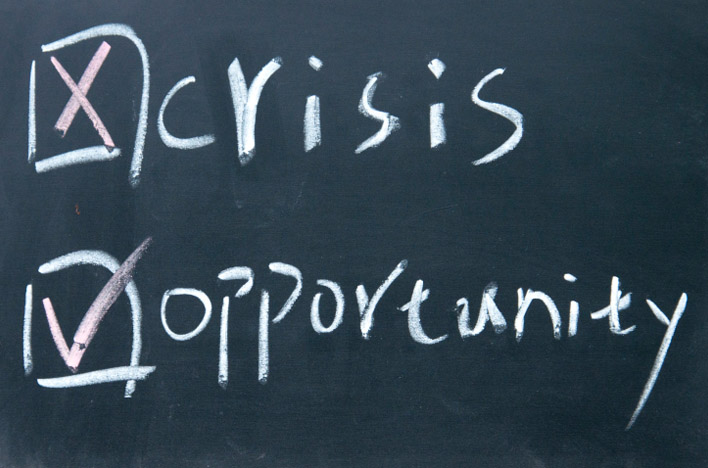With every crisis, there are three choices: act, don’t act or act later. Later is often another way of saying “I don’t know.” There is nothing wrong with that.
The next question needs to be, “What do I need to know to make the decision?” Now you have two choices–get the information OR recognize that the information you would like to have is not available or not available in your “decision window.” If you can’t get it in time to help the decision, you are back to yes or no. Waiting indefinitely is the same as don’t act–there is no change attached to it so it defaults to “do nothing.”
What Kind of Crisis?
Let’s take the recession a few years ago as a common event that many companies struggled with. In the recession, I observed many companies trying to sit it out–cut expenses and hope it blows over so that they can resume when it picks up. (In my book, that was “don’t act.”) I hope that was not you. If it was, you probably have discovered it didn’t pick up where it left off–more is expected. Companies have redefined value and expect more–more functionality, more service, more, more, more. Margins are squeezed, and it seems there is no way out.
Fortunately, not so. With every crisis there IS a solution; it just doesn’t come packaged like the past. In fact, hardships and crisis have a virtue–they make us smarter, stronger and better. We are forced to rethink what we do and how we do it to survive and thrive. Warren Buffett is reputed to have commented shortly after the recession, “When the tide goes out, we can see who was skinny dipping.” Companies ill prepared or unable to respond may have been reaping rewards in a strong market without strong business practices or leadership in place.
Two Great Examples of Companies That Chose to Act
The Dwyer Group, a branded service company franchiser, realized they weren’t as recession proof as they thought they were. While appliances still needed to be repaired, they were not as often replaced. They cut costs, sure. But they did better! They developed a new appointment system online, allowing customers to schedule their own appointments (like Apple’s Genius Bar) and send a photo of the assigned technician 24 hours before arrival. Customers loved the convenience and added safety, and the company saved on payroll and training costs. When the economy recovered, those savings still fell to the bottom line.
I will also be forever indebted to Southwest Airlines for how they reacted after the 9/11 crisis. A long time ago, to be sure, but it stands out in my mind for its courage. I was booked to fly within days of 9/11, and SWA offered to refund any ticket of any passenger who was not wanting to fly. With the height of emotions running at the time, I imagine they lost a lot of money. But it created a good will that enabled them to bounce back as well or better as any airline after that tragic event. In fact, Southwest is the U.S. company that has generated the greatest stockholder return over a 30-year period–in part, rewarded for their historical outstanding efforts at putting people first over policies and doing what makes sense and what is right–even if it is hard.

